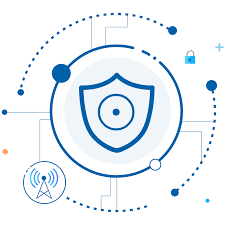5G Security Issues: Challenges and How to Address Them
The advent of 5G technology is revolutionizing industries, enabling lightning-fast data transfer, low latency, and connectivity for billions of devices. However, with this rapid technological advancement comes a new set of 5G security issues that must be addressed to ensure network reliability and user safety.
In this blog, we’ll delve into the key security concerns of 5G networks, explore their implications, and provide strategies to mitigate these risks effectively.
Key 5G Security Issues
Expanded Attack Surface
- What it is: The sheer scale of connected devices, from smartphones to IoT devices, creates more opportunities for cyberattacks.
- Impact: Each device connected to the network could become a potential entry point for hackers.
Protocol Vulnerabilities
- What it is: Protocols like GTP and Diameter, essential for 5G communication, are prone to attacks such as denial of service (DoS) and data interception.
- Impact: Compromised protocols can disrupt network services and leak sensitive information.
Network Slicing Risks
- What it is: 5G allows for virtual network slicing, where multiple independent networks share the same physical infrastructure.
- Impact: A breach in one slice could compromise the security of others.
Supply Chain Concerns
- What it is: The reliance on multiple vendors for 5G components increases the risk of vulnerabilities introduced during manufacturing.
- Impact: Malicious software or hardware could be embedded into the network.
IoT Device Exploitation
- What it is: Many IoT devices connected to 5G networks have weak security protocols.
- Impact: These devices could be hijacked for botnet attacks or unauthorized access.
Real-World Implications of 5G Security Flaws
- Critical Infrastructure Vulnerabilities: 5G powers essential services like healthcare and smart cities, making them high-value targets for attackers.
- Financial Losses: Cyberattacks can lead to data breaches, fraud, and network downtime, costing businesses billions.
- Erosion of Trust: Persistent security flaws may reduce consumer confidence in 5G networks.
Addressing 5G Security Challenges
Adopt Zero-Trust Security Models
- Ensure all devices and users are authenticated before granting access.
- Continuously monitor network activity for anomalies.
Secure Network Slicing
- Use advanced isolation techniques to prevent breaches in one slice from affecting others.
- Implement strict access controls for each slice.
Strengthen Protocol Security
- Deploy firewalls and intrusion detection systems to protect vulnerable protocols like GTP and Diameter.
- Regularly update and audit protocol configurations.
Enhance IoT Device Security
- Enforce strict security standards for IoT manufacturers.
- Use encryption and regular firmware updates to protect devices.
Monitor Supply Chain Integrity
- Vet vendors rigorously and conduct regular security audits.
- Collaborate with trusted suppliers to minimize risks.
The Role of AI in 5G Security
Artificial intelligence (AI) and machine learning (ML) are pivotal in tackling 5G security issues:
- Real-Time Threat Detection: AI can quickly identify and respond to potential threats.
- Predictive Analysis: ML algorithms can anticipate vulnerabilities and suggest preemptive measures.
- Automated Responses: AI-powered tools can neutralize attacks faster than manual interventions.
Global Collaboration for 5G Security
Governments, telecom providers, and technology vendors must work together to establish global security standards for 5G. Initiatives like sharing threat intelligence and developing unified cybersecurity policies are critical to safeguarding these networks.
Conclusion
While 5G technology offers immense opportunities, its security challenges cannot be overlooked. Proactively addressing 5G security issues is essential to protect critical infrastructure, secure sensitive data, and ensure the reliability of these advanced networks.
With the right combination of technology, policy, and collaboration, we can build a secure 5G future that empowers innovation while safeguarding users and industries.




Comments
Post a Comment